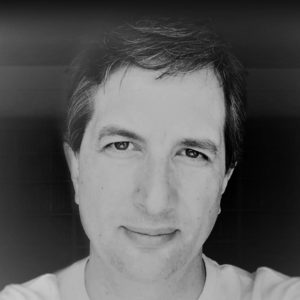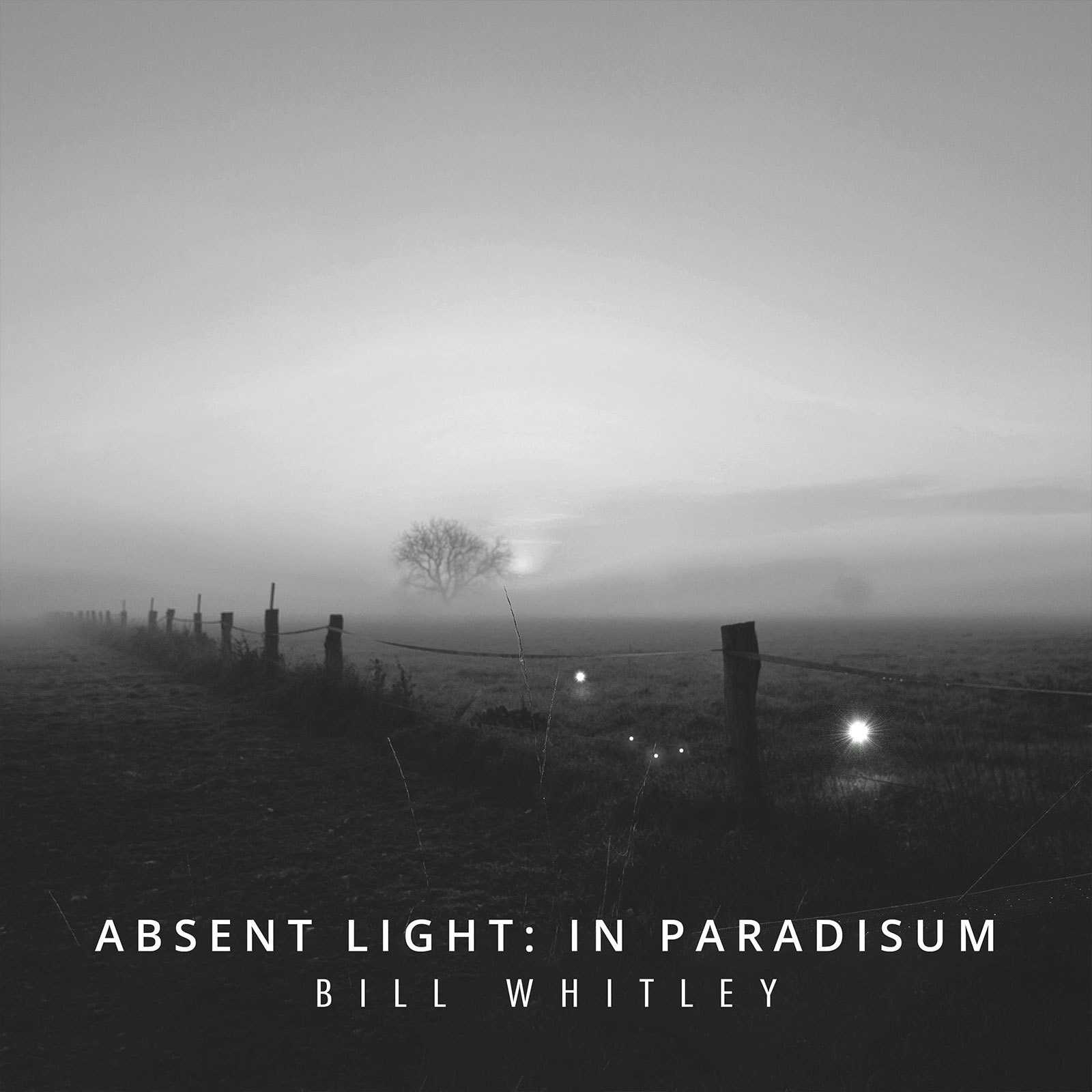Absent Light
Bill Whitley composer
Peeling back the complex layers of Bill Whitley’s ethereal ABSENT LIGHT, one is astounded to see how this music could at once be so serene, yet technically intricate.
For starters, there’s the massive instrumental setup. ABSENT LIGHT, despite its pleasant airiness, is scored for male soprano, piano, soprano saxophone, electric bass, electric guitar, celesta, glockenspiel, tenor instrument, and glass bowls. But its true beauty is of a mathematical nature: featuring three separate rhythmic cycles, instruments taking turns with arithmetic regularity, and a singing undercurrent of the glockenspiel playing a cryptic 73-beat counterpoint.
Blurring the lines between mathematics and music, ABSENT LIGHT is a shining example of intricate acoustic architecture. Mesmerizing and intense.
Listen
Stream/Buy
Choose your platform
"More than thirty minutes that pass in the blink of an eye"
"However mathematical the work sounds when described on paper, it unfolds with a naturalness that belies its rigorously worked-out structural definition."
Track Listing & Credits
| # | Title | Composer | Performer | |
|---|---|---|---|---|
| 01 | Absent Light: In Paradisum | Bill Whitley | Pietro Bolognini, vocals; Elena Talarico, piano & celesta; Francesco Zago, electric bass & electric guitar; Stefano Grasso, vibraphone; Giuseppe Olivini, electronic tanpura | 10:50 |
| 02 | In Paradisum (Francesco Zago Version) | Bill Whitley | Pietro Bolognini, vocals; Elena Talarico, piano & celesta; Francesco Zago, electric bass & electric guitar; Stefano Grasso, vibraphone; Giuseppe Olivini, electronic tanpura | 5:57 |
| 03 | Absent Light: In Paradisum (Instrumental Version) | Bill Whitley | Elena Talarico, piano & celesta; Francesco Zago, electric bass & electric guitar; Fedele Stucchi, trombone; Federico De Zottis, soprano; Stefano Grasso, vibraphone; Giuseppe Olivini, electronic tanpura | 13:20 |
Recorded May 16, 2017 at Indiehub in Milano, Italy; and July 25, 2020
Recording Session Producer Francesco Zago & Bill Whitley
Recording Session Engineer Gabriele Simoni
Recording Session Engineer (2020) Stefano Giungato
Editing, Mixing & Mastering Francesco Zago
Executive Producer Bob Lord
Executive A&R Sam Renshaw
A&R Director Brandon MacNeil
A&R Quinton Blue
VP, Audio Production Jeff LeRoy
Audio Director Lucas Paquette
Mastering Shaun Michaud
VP, Design & Marketing Brett Picknell
Art Director Ryan Harrison
Design Edward A. Fleming
Publicity Patrick Niland, Sara Warner
Artist Information

Bill Whitley
Bill Whitley works with shapes and patterns, correlating musical materials to kinetic sculpture. His music is defined by interlocking, often hypnotic patterns interspersed with passages of intense rhythmic energy, while placing linear content in the foreground.
Elena Talarico
Elena Talarico (b. 1993) is an Italian pianist and teacher. She graduated in piano performance with honors and honorable mention at Conservatorio Giuseppe Verdi in Como, under the guidance of P. Forlenza. She obtained a master’s degree in musicology with honors at “Università degli Studi” in Milan and in music pedagogy at “Università Dante Alighieri.” She founded the KUBIN project with the electric guitarist F. Zago, as well as the Eurythmia Quartet, collaborating with various artists. Talarico has recorded for Ravello Records (United States), Da Vinci Publishing (Osaka), and Preludio label (Milan), and she is currently teaching piano and chamber music at Civico Istituto G. Zelioli in Lecco.
Francesco Zago
Francesco Zago (b. 1972 in Milan) is a guitarist, composer, arranger, and producer. He has released fifteen albums as main composer, guitarist or producer, plus other occasional contributions. From 1993 to 1999, he took part in the progressive rock group The Night Watch, releasing an album called Twilight in 1997. In 2005, Zago and Marcello Marinone established Altrock Label, promoting non-conventional music. In the same year, he established the ensemble Yugen, which has since released five albums.
Pietro Bolognini
Pietro Bolognini began his studies of violin in the sixth grade under the guidance of violinist Laura Sarti at Scuola Media Jussi in San Lazzaro di Savena, Italy. Now at Liceo Musicale Lucio Dalla in Bologna, Bolognini is continuing his studies in violin with Sarti, and voice with Raffaella Tarozzi and Alhambra Superchi.
Notes
Absent Light (2004-2011) was started on All Saint’s Day, 2004 and was completed in the spring of 2011. It is scored for male soprano, piano, soprano saxophone, electric bass, electric guitar, celesta, glockenspiel, tenor instrument, and glass bowls or tanpura. In Paradisum from the Latin requiem—which is performed as the casket is incensed toward the end of the liturgy, just prior to the recessional—is central to the composition, and the piece is inspired by the spirit of that moment.
It is constructed with the use of three separate rhythmic cycles: two shared between the piano, the vibes, and the guitar; and the other—73 beats (876543212345678)—played by the glockenspiel establishes the timeline for the entire piece. All of the events in this piece occur in some relationship to the bells.
—
“The loop that makes up Absent Light occurred to me as I was driving on a stretch of Hwy 99 between Junction City and Corvallis on my way to teach in Monmouth OR. It was November 1st, 2004. I was absorbed in the significance of the day. I was thinking about how perfectly earth-based traditions lined up with the Christian calendar—Samhain, autumnal equinox, All Souls, All Saints, the celebration of death, the rapid descent into darkness until the cycle begins again on the Darkest Night. Fog was coming in off of the river. I saw those little dots that you see when engulfed in fog and I remembered Matthew Fox and Rupert Sheldrake’s theory of other-worldly presences explained as light particles in The Physics of Angels.
That’s when the loop started…
The loop sat in a sketch book for two weeks before any composing started. I was perplexed by how a gesture that didn’t go anywhere or do anything could be so engaging. I knew that most likely it would call for some sort of additive process. I tried all types of techniques, none of which worked. I tried repeating a note every loop…adding rests every three loops…nothing seemed to set the piece into motion.
After several days of attempts, I thought maybe a ‘subtractive’ process would work better. I tried a couple of processes, and liked the effect of the loop evaporating into thin air. Toward the end, after several loops, the result was very pointillistic, and you would start to forget what it sounded like. For a while, that was the piece.
Ultimately though, I made the decision that simply evaporating the loop wouldn’t be as interesting as ‘migrating’ the notes from the piano into other instruments. In this way, as the loop disappeared it would also be transformed into particles—like particles of light. But at what rate? I decided to choose numbers for their numerological significance. Every 11th note, for example, the vibes picked up a note from the loop. Every 27th note (9+9+9), the celesta. Every 21st (7+7+7), the guitar.
I wrote out the entire thing in this way until the piano had completely disappeared. The structure for the loop was complete. But then what? I would have the vibes, celeste, and guitar reverse the process, and gradually disappear—going back the way they came, like incense. Like angles ushering out the piano—the body—transporting, then releasing it.
—
In stage performance, once the piano part has completely evaporated, the pianist gets up, quietly closes the lid, and exits.
The glockenspiel establishes the timeline of the entire piece—73 beats (876543212345678).
The soprano saxophone plays three notes, a sighing motive. This gesture grows longer by the value of an eighth-note with each iteration and intersects with the beginning of each 73-beat cycle, while the tenor instrument begins a new phrase at the beginning of each 73-beat cycle.
The piece is centered on B, another symbolic element, since B is the 11th note of the scale, and November the 11th month, the end of the Christian calendar.”
— Bill Whitley

